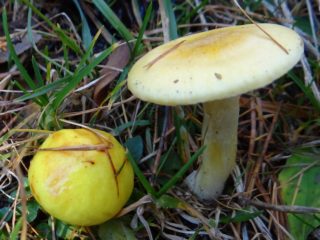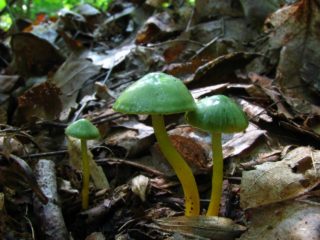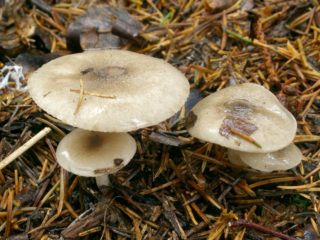Content
Gigrofor russula or russula (Hygrophorus russula) lamellar mushroom Basidiomycete, a representative of the genus Gigroforov of the Gigroforov family. It received its specific name because of its external similarity with russula.

Among mushroom pickers, it is also known as cherry, most likely due to its color
What does a russula hygrophor look like?
A fleshy, large mushroom of dark pink or purple color. The cap is strong, large, about 5-15 cm in diameter. The surface is fibrous, often covered with radial cracks. In young specimens, the shape of the cap is convex; with age, it becomes prostrate, sometimes with a tubercle and thickening in the center. Its edges are slightly tucked up to the leg. The surface of the cap is slippery, sticky. Its color is uneven in all mushrooms.
The leg is quite long - 5-12 cm, about 1-4 cm thick. It is never hollow. The shape is cylindrical, generally tapering downward. The leg expands at the base rather rarely. Its surface is smooth, dry, in the upper part there is a slight pubescence.
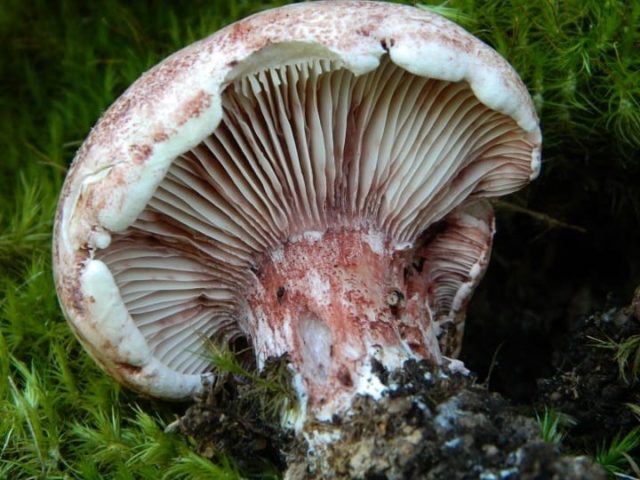
The color of the leg can be pink or purple, this is one of the main characteristics that distinguishes the species from a simple russula
The pulp is white, rather dense. Contacting with air, it changes color, becomes dark red. The plates of the hymenophore are frequent, descending to the pedicle. The colors are white, turning reddish or purple as they grow. Spores are ovoid and medium in size. Spore powder is white.
Where does the russule hygrophor grow
Grows in mountainous or hilly areas. Prefers broad-leaved and mixed plantations. Forms mycorrhiza with oak and beech. Loves moss-covered soils.
Is it possible to eat russula hygrophor
Gigrofor russula - edible mushroom, 4 categories of nutritional value. It is practically tasteless, has a subtle, mealy smell.
False doubles
The double of the fungus is the reddening hygrophor. It is also an edible species that can be distinguished by the following features:
- smaller cap sizes;
- longer leg;
- domed hat;
- bitter taste;
- the presence of mucus and purple scales on the cap.
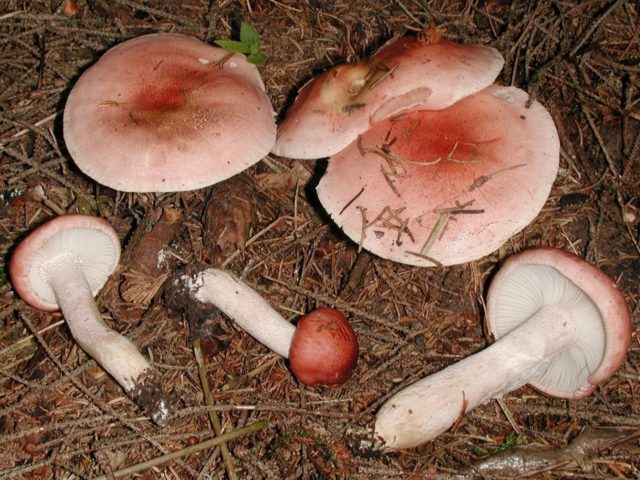
The twin has a more bitter taste, although it also belongs to the category of edible mushrooms and is completely safe
Collection rules
The russula hygrophor grows in small groups in a favorable period for it. Fruiting time is August-October. Sometimes picking by mushroom pickers is carried out until the first snow falls.
Use
The mushroom has no particular gastronomic value. It can be boiled, fried, dried, pickled. Often these mushrooms are used to make sauces, side dishes, soups. Due to the not too bright taste, most often the russule-shaped hygrophor is conserved together with other mushrooms.
Conclusion
Gigrofor russula is a valuable, nutritious and healthy mushroom. It is not found very often in forests, but it can be easily grown at home, on your personal plot. The mushroom tastes good. In terms of taste, it is considered the best among all members of the family. It can be consumed fresh, as well as harvested for the winter in different ways.


